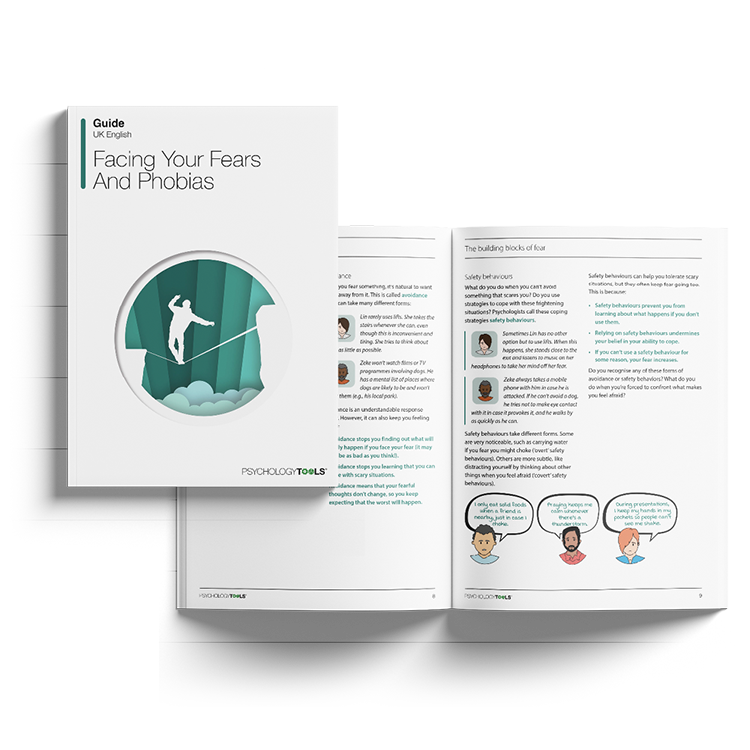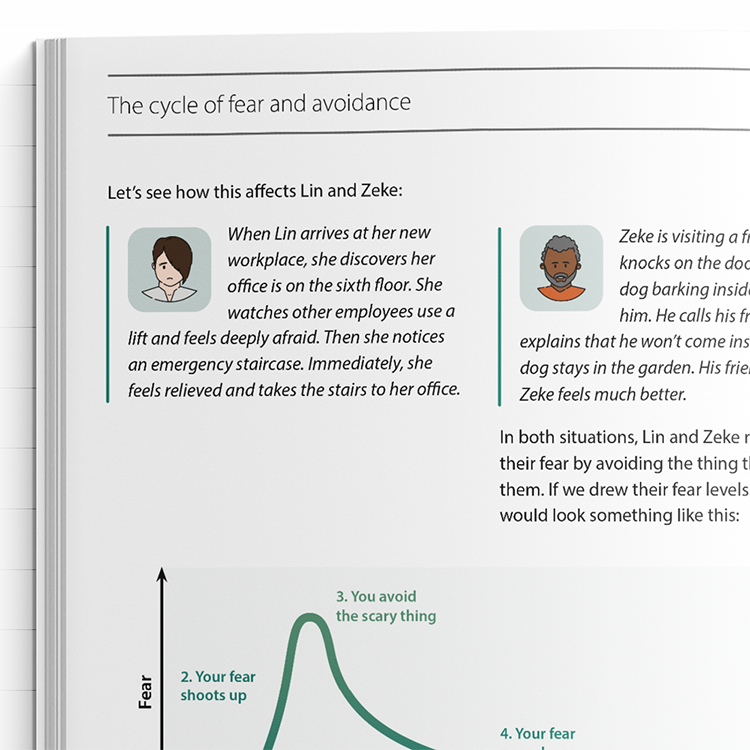Workbook (PDF)
A workbook containing elements of psychoeducation and skills-development.
A comprehensive guide designed to support individuals in understanding and addressing extreme fears and phobias.

A workbook containing elements of psychoeducation and skills-development.
To use this feature you must be signed in to an active account on the Advanced or Complete plans.

The Facing Your Fears And Phobias guide is written for clients who struggle with fears or phobias. It provides comprehensive information about what fear is, how fears and phobias can be maintained, and detailed instructions explaining how the practice of exposure can be used to overcome fears. Designed for use as guided self-help it can be used to support work completed in session, or can provide a scaffold for treatment for sufficiently motivated clients.
Extreme fears and phobias can have a significant impact on mood, well-being, and daily functioning. This guide is designed to help clients overcome these challenges.
Clients who avoid particular objects, animals, or situations (e.g., heights, spiders, flying) due to intense fear.
Individuals experiencing recurring panic attacks often linked to specific triggers or feared sensations.
Clients who fear judgment or embarrassment in social or performance situations.
Individuals who fear being in places where escape might be difficult or help unavailable in the event of panic-like symptoms.
Clients who misinterpret bodily sensations or medical symptoms as evidence of serious illness.
Individuals whose life has become limited by fear-based avoidance of discomfort or uncertainty.
Identify clients who may be struggling with extreme fear or specific phobia.
Use the content to inform clients about the nature of extreme fears and phobias.
Discuss the client’s personal experiences with extreme fear.
Utilize the exercises in the guide to help clients address these difficulties.
Fear is a universal human experience. Although uncomfortable, it serves an important function: helping individuals stay alert and safe in potentially dangerous situations. However, when fear becomes excessive, persistent, or triggered by specific objects or situations, it can lead to significant distress and functional impairment. In such cases, the fear may be classified as a phobia.
Facing Your Fears And Phobias is a psychoeducational guide designed to support clients who struggle with overwhelming fears. It can be used as a resource to introduce clients to the principles of exposure therapy, which is a well-established and effective intervention for phobias and anxiety-related difficulties. The guide aims to help clients understand the nature and function of fear, how fear can become ‘stuck’ and develop into an ongoing problem, and how exposure techniques can help them gradually confront and reduce their fears.

Just enter your name and email address, and we'll send you Facing Your Fears And Phobias (English US) straight to your inbox. You'll also receive occasional product update emails wth evidence-based tools, clinical resources, and the latest psychological research.
Working...
This site uses strictly necessary cookies to function. We do not use cookies for analytics, marketing, or tracking purposes. By clicking “OK”, you agree to the use of these essential cookies. Read our Cookie Policy